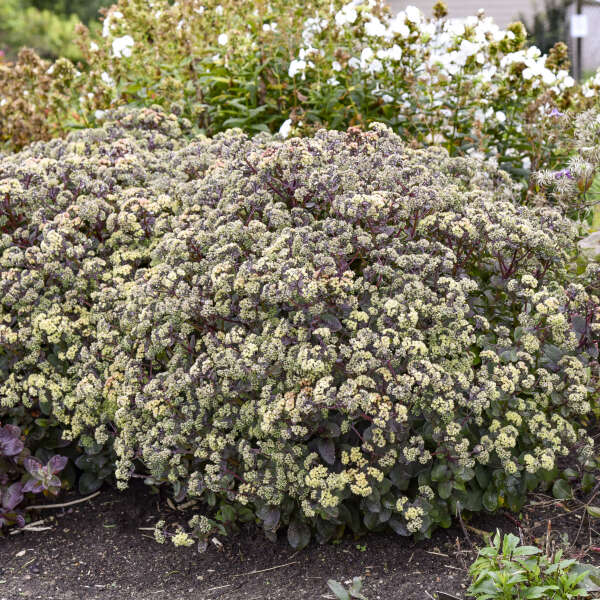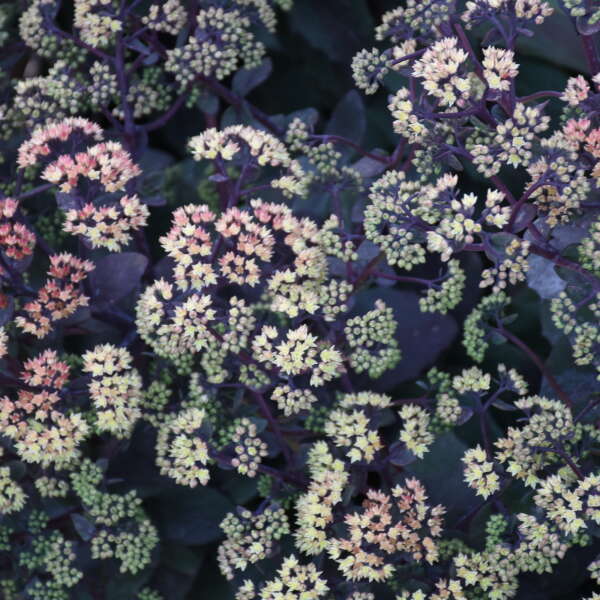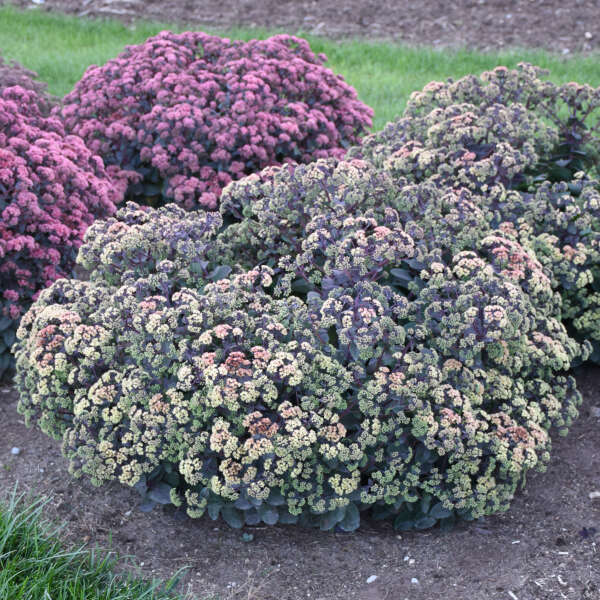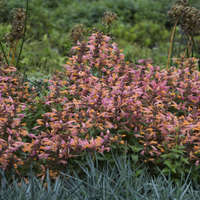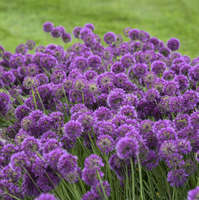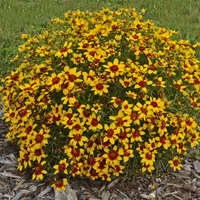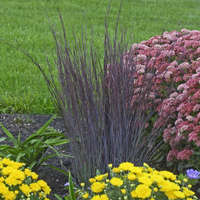Sedum 'Night Light' PPAF

Common Name: Autumn Stonecrop
A beautifully contrasting Sedum that will set your late summer landscape aglow! 'Night Light' produces deep olive green leaves on dark purples stems that hold clusters of light yellow flowers. Mature flowers have blush tones. Unlike other Sedum that lodge during flowering season, 'Night Light' has stocky stems and holds its dome-like shape late in the season.
Tall, upright sedums form substantial clumps of foliage which can be substituted for shrubs in the landscape. Their stout, sturdy stems support the massive flower heads which develop in summer and burst into bloom in fall. If left standing, they provide winter interest and food for birds.
